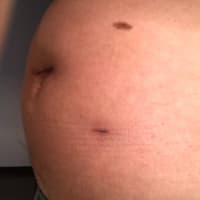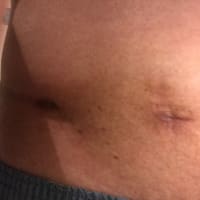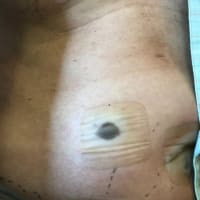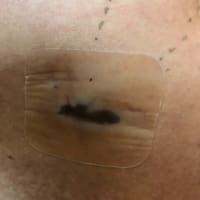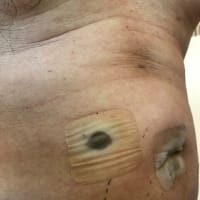米国のカイロプラクティックは
American Chiropractic Association 米国カイロプラクティック協会が
束ねています。
http://www.acatoday.com/
このサイトのどこにもカイロプラクティックによって側弯症が治療できる。
などと表明した文章は見あたりません。
彼らの主たる治療目的は、いわゆる「腰痛」です。
カイロプラクティックは米国生まれです。本家本元の米国では、側弯症治療の
ことなど触れてもいないのに、なぜか日本では「発展」「改良」された技が
施術されているようです。
米国NIHの民間療法についての記述を見つけましたので、
このサイトからの情報も今後提供していきたいと思います。
National Center for Complementary and Alternative Medicine (NIH)
http://nccam.nih.gov/health/chiropractic/
また文献検索により、カイロプラクティックによる合併症がありましたので
今後和訳していきたいと思います。
Am J Med. 2002 May;112(7):566-71
Risks associated with spinal manipulation.
Department of Complementary Medicine, School of Sport and Health Sciences, University of Exeter, Exeter, United Kingdom.
The aim of this systematic review was to summarize the evidence about the risks of spinal manipulation. Articles were located through searching three electronic databases (MEDLINE, EMBASE, Cochrane Library), contacting experts (n =9), scanning reference lists of relevant articles, and searching departmental files. Reports in any language containing data relating to risks associated with spinal manipulation were included, irrespective of the profession of the therapist. Where available, systematic reviews were used as the basis of this article. All papers were evaluated independently by the authors. Data from prospective studies suggest that minor, transient adverse events occur in approximately half of all patients receiving spinal manipulation. The most common serious adverse events are vertebrobasilar accidents, disk herniation, and cauda equina syndrome. Estimates of the incidence of serious complications range from 1 per 2 million manipulations to 1 per 400,000. Given the popularity of spinal manipulation, its safety requires rigorous investigation.
.............................................................
Pediatrics. 2007 Jan;119(1):e275-83. Epub 2006 Dec 18
Adverse events associated with pediatric spinal manipulation: a systematic review.
CARE Program, Department of Pediatrics, University of Alberta, Edmonton, Alberta, Canada
BACKGROUND: Spinal manipulation is a noninvasive manual procedure applied to specific body tissues with therapeutic intent. Although spinal manipulation is commonly used in children, there is limited understanding of the pediatric risk estimates. OBJECTIVE: Our goal was to systematically identify and synthesize available data on adverse events associated with pediatric spinal manipulation. METHODS: A comprehensive search was performed of 8 major electronic databases (eg, Medline, AMED, MANTIS) from inception to June 2004 irrespective of language. Reports were included if they (1) were a primary investigation of spinal manipulation (eg, observation studies, controlled trials, surveys), (2) included a study population of children who were aged 18 years or younger, and (3) reported data on adverse events. Data were summarized to demonstrate the nature and severity of adverse events that may result rather than their incidence. RESULTS: Thirteen studies (2 randomized trials, 11 observational reports) were identified for inclusion. We identified 14 cases of direct adverse events involving neurologic or musculoskeletal events. Nine cases involved serious adverse events (eg, subarachnoidal hemorrhage, paraplegia), 2 involved moderately adverse events that required medical attention (eg, severe headache), and 3 involved minor adverse events (eg, midback soreness). Another 20 cases of indirect adverse events involved delayed diagnosis (eg, diabetes, neuroblastoma) and/or inappropriate provision of spinal manipulation for serious medical conditions (ie, meningitis, rhabdomyosarcoma). CONCLUSIONS: Serious adverse events may be associated with pediatric spinal manipulation; neither causation nor incidence rates can be inferred from observational data. Conduct of a prospective population-based active surveillance study is required to properly assess the possibility of rare, yet serious, adverse events as a result of spinal manipulation on pediatric patients.
American Chiropractic Association 米国カイロプラクティック協会が
束ねています。
http://www.acatoday.com/
このサイトのどこにもカイロプラクティックによって側弯症が治療できる。
などと表明した文章は見あたりません。
彼らの主たる治療目的は、いわゆる「腰痛」です。
カイロプラクティックは米国生まれです。本家本元の米国では、側弯症治療の
ことなど触れてもいないのに、なぜか日本では「発展」「改良」された技が
施術されているようです。
米国NIHの民間療法についての記述を見つけましたので、
このサイトからの情報も今後提供していきたいと思います。
National Center for Complementary and Alternative Medicine (NIH)
http://nccam.nih.gov/health/chiropractic/
また文献検索により、カイロプラクティックによる合併症がありましたので
今後和訳していきたいと思います。
Am J Med. 2002 May;112(7):566-71
Risks associated with spinal manipulation.
Department of Complementary Medicine, School of Sport and Health Sciences, University of Exeter, Exeter, United Kingdom.
The aim of this systematic review was to summarize the evidence about the risks of spinal manipulation. Articles were located through searching three electronic databases (MEDLINE, EMBASE, Cochrane Library), contacting experts (n =9), scanning reference lists of relevant articles, and searching departmental files. Reports in any language containing data relating to risks associated with spinal manipulation were included, irrespective of the profession of the therapist. Where available, systematic reviews were used as the basis of this article. All papers were evaluated independently by the authors. Data from prospective studies suggest that minor, transient adverse events occur in approximately half of all patients receiving spinal manipulation. The most common serious adverse events are vertebrobasilar accidents, disk herniation, and cauda equina syndrome. Estimates of the incidence of serious complications range from 1 per 2 million manipulations to 1 per 400,000. Given the popularity of spinal manipulation, its safety requires rigorous investigation.
.............................................................
Pediatrics. 2007 Jan;119(1):e275-83. Epub 2006 Dec 18
Adverse events associated with pediatric spinal manipulation: a systematic review.
CARE Program, Department of Pediatrics, University of Alberta, Edmonton, Alberta, Canada
BACKGROUND: Spinal manipulation is a noninvasive manual procedure applied to specific body tissues with therapeutic intent. Although spinal manipulation is commonly used in children, there is limited understanding of the pediatric risk estimates. OBJECTIVE: Our goal was to systematically identify and synthesize available data on adverse events associated with pediatric spinal manipulation. METHODS: A comprehensive search was performed of 8 major electronic databases (eg, Medline, AMED, MANTIS) from inception to June 2004 irrespective of language. Reports were included if they (1) were a primary investigation of spinal manipulation (eg, observation studies, controlled trials, surveys), (2) included a study population of children who were aged 18 years or younger, and (3) reported data on adverse events. Data were summarized to demonstrate the nature and severity of adverse events that may result rather than their incidence. RESULTS: Thirteen studies (2 randomized trials, 11 observational reports) were identified for inclusion. We identified 14 cases of direct adverse events involving neurologic or musculoskeletal events. Nine cases involved serious adverse events (eg, subarachnoidal hemorrhage, paraplegia), 2 involved moderately adverse events that required medical attention (eg, severe headache), and 3 involved minor adverse events (eg, midback soreness). Another 20 cases of indirect adverse events involved delayed diagnosis (eg, diabetes, neuroblastoma) and/or inappropriate provision of spinal manipulation for serious medical conditions (ie, meningitis, rhabdomyosarcoma). CONCLUSIONS: Serious adverse events may be associated with pediatric spinal manipulation; neither causation nor incidence rates can be inferred from observational data. Conduct of a prospective population-based active surveillance study is required to properly assess the possibility of rare, yet serious, adverse events as a result of spinal manipulation on pediatric patients.














